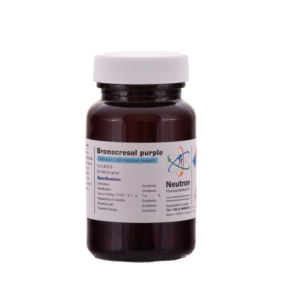Crystal violet or gentian violet, also known as methyl violet 10B or hexamethyl pararosaniline chloride, is a triarylmethane dye used as a histological stain and in Gram’s method of classifying bacteria. Crystal violet has antibacterial, antifungal, and anthelmintic (vermicide) properties and was formerly important as a topical antiseptic. The medical use of the dye has been largely superseded by more modern drugs, although it is still listed by the World Health Organization.
The name gentian violet was originally used for a mixture of methyl pararosaniline dyes (methyl violet), but is now often considered a synonym for crystal violet. The name refers to its colour, being like that of the petals of certain gentian flowers; it is not made from gentians or violets.
🏭⚗️ Production
A number of possible routes can be used to prepare crystal violet. The original procedure developed by the German chemists Kern and Caro involved the reaction of dimethylaniline with phosgene to give 4,4′-bis(dimethylamino)benzophenone (Michler’s ketone) as an intermediate. This was then reacted with additional dimethylaniline in the presence of phosphorus oxychloride and hydrochloric acid.
🧪 Applications
Medical
Gentian violet has antibacterial, antifungal, antihelminthic, antitrypanosomal, antiangiogenic, and antitumor properties. It is used medically for these properties, in particular for dentistry, and is also known as “pyoctanin” (or “pyoctanine”). It is commonly used for:
Marking the skin for surgery preparation and allergy testing;
Treating Candida albicans and related fungal infections, such as thrush, yeast infections, various types of tinea (ringworm, athlete’s foot, jock itch);
Treating impetigo; it was used primarily before the advent of antibiotics, but still useful to persons who may be allergic to penicillin.
In resource-limited settings, gentian violet is used to manage burn wounds, inflammation of the umbilical cord stump (omphalitis) in the neonatal period, oral candidiasis in HIV-infected patients and mouth ulcers in children with measles.
In body piercing, gentian violet is commonly used to mark the location for placing piercings, including surface piercings.
Veterinary
Because of its antimicrobial activity, it is used to treat ich in fish. However, it usually is illegal to use in fish intended for human consumption.




